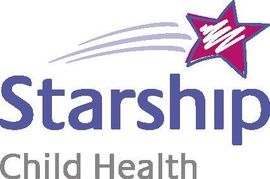Central Auckland > Public Hospital Services > Starship Child Health >
Starship Paediatric Spine Service
Public Service, Spinal, Orthopaedics, Paediatrics
Back Pain
Back pain in children is abnormal and should be investigated thoroughly. There are a large variety of causes for back pain, ranging from benign musculoskeletal pain to more sinister causes such as spinal cord tumours. Luckily, the vast majority of back pain in children is post-traumatic in nature, and is due to musculoskeletal strain. This type of pain is usually self-limiting, and can be treated with conservative measures such as oral analgesia and rest. Back pain that is not self-limiting, and persists beyond two to three weeks should be investigated.
Seek medical attention as soon as possible if your child has back pain accompanied by:
- Fever or weight loss
- Weakness, numbness, trouble walking or pain that radiates down one or both legs
- Bowel or bladder dysfunction
- Pain that interferes with sleep
- Squats down with a straight spine to reach a toy on the floor, rather than bend over.
Diagnosing the Cause of Back Pain
X-rays
The doctor may take several x-ray pictures of the spine and pelvis from various angles.
Bone Scan
Useful for diagnosing subtle bone fractures that may not show up on a routine x-ray. Bone scans are also useful for detecting infection or tumours.
CT Scan
Computerised Tomography uses a combination of x-rays and computer technology to produce more detailed images of bones and internal organs. It creates cross-sectional images (like slices) of the inside of the body.
MRI Scan
A Magnetic Resonance Imaging Scan uses a combination of large magnets, radiofrequencies, and a computer to produce detailed images of organs and structures within the body. It is used to evaluate the spinal cord and spinal nerves which cannot be seen on an ordinary x-ray.
Lab Tests
Laboratory tests may include checking white and red blood cells (complete blood-cell count) and looking for system-wide inflammation (measuring erythrocyte sedimentation rate).
Classification of back pain:
1. Mechanical problems
- Overuse injury
- Direct traumatic injury
- Ruptured disc
Muscle strain in the middle or lower back gets better on its own with rest. Many teenagers may have "mechanical low back pain". This is often related to tight hamstrings and weak abdominal muscles. These individuals seem to do well with a physical therapy program stressing hamstring stretching and abdominal strengthening.
2. Developmental abnormalities
- Spondylolysis / spondylolisthesis
- Congenital scoliosis or kyphosis
- Scheuermann's kyphosis - kyphosis is a common cause of middle (thoracic) back pain in adolescents. Vertebrae become wedged, causing a rounded or hunched back. The curve may ache, and pain may get worse with activity.
3. Inflammatory and infectious diseases
- Diskitis
- Vertebral osteomyelitis
- Juvenile rheumatoid arthritis
- Epidural abscess
4. Neoplastic disorders/tumours
- On rare occasion, tumours can be responsible for back pain. Tumours of the surrounding soft tissue of the spine, tumours of the bone, or tumours within and around the spinal cord. Pain may be constant and progressive, is unrelated to activity and/or happens at night.
Treatment
- Treatment options for back pain in children vary and depend on the cause of the back pain.
- Overuse injury or mild spondylolisthesis - most often, this back pain will improve by itself, or with rest, analgesics (such as ibuprofen) and sometimes, physical therapy.
- Surgical intervention may be required for more advanced problems.
- Antibiotics will be required for back pain caused by infections.
Facts about back pain in children
- Unlike the adult population in whom back pain may be the most common pain report, children rarely complain of back pain.
- In the adolescent age group, back pain may be related to similar causes as in adults including acute musculoskeletal strain or overuse injury.
- Back pain due to a traumatic event or overuse injury typically is improved with rest and simple analgesics in two to three days.
- There is a gradual increase of reports of back pain as children age.
- Back pain is exceedingly uncommon in the pre-teenage years. If a young child has back pain, he or she should be evaluated by a qualified health care professional.
- Back pain in children accompanied with a fever, changes in bowel or bladder dysfunction, or changes in strength or sensation of arms / legs requires urgent evaluation.

